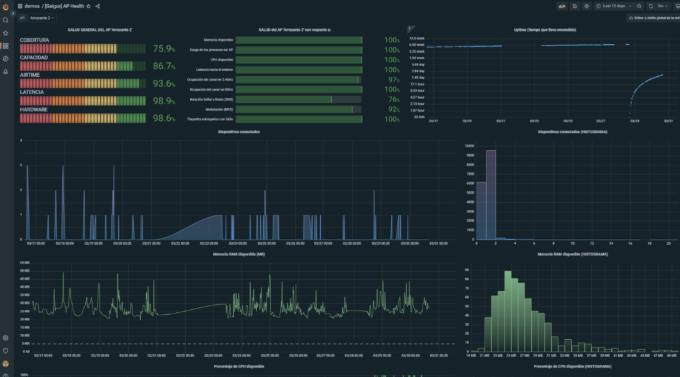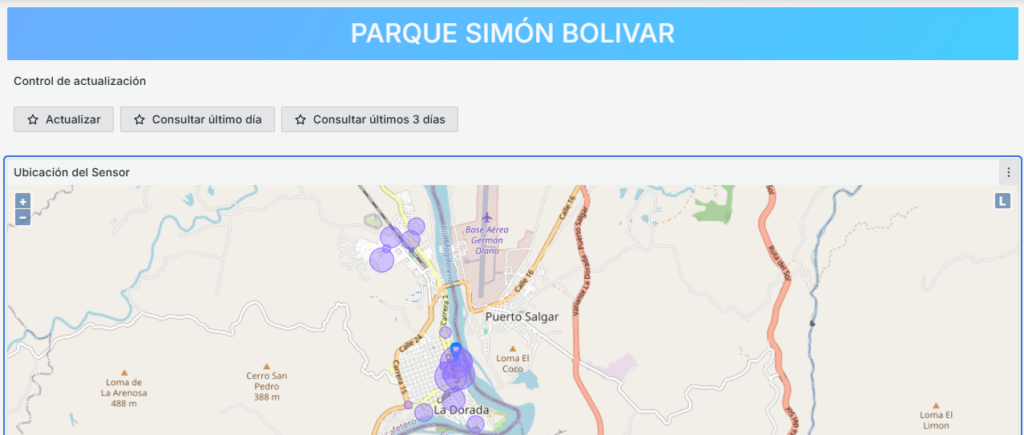Artificial intelligence (AI) applied to Wi-Fi (AI Wi-Fi) is enabling the optimization and transformation of wireless networks into intelligent platforms that offer high-value solutions for various sectors. In this article, we will analyze how Galgus technology is generating new business models and improving the user experience.
The challenge of connectivity in complex environments
The growing demand for digital services has highlighted the limitations of some Wi-Fi networks in high-density environments or under changing conditions. Key challenges include:
- High density of users and devices: In locations such as airports, shopping centers, stadiums, or even on public transport (airplanes, trains), hundreds or thousands of devices are connected simultaneously. This leads to network saturation, making it difficult to maintain a consistent user experience.
- Environments with interference: Wireless networks in areas with many metallic structures, multiple signal sources, or constant movement suffer from interference that degrades connection quality.
- Real-time management and optimization: Wi-Fi network conditions can vary drastically in a matter of seconds. The ability to adapt in real time to these variations is essential to maintain quality of service.
In this context, AI Wi-Fi integration emerges as the perfect solution to overcome these challenges.
AI Wi-Fi: a new paradigm in network optimization

Artificial intelligence applied to Wi-Fi is revolutionizing the way wireless networks are managed and optimized. Some of the key applications and benefits of AI Wi-Fi are:
- Automatic performance optimization: Using machine learning algorithms, the network can adjust itself in real time to balance loads, assign channels, and control transmission power, ensuring a consistent user experience even under adverse conditions.
- Predictive analysis: AI Wi-Fi allows problems to be anticipated before they occur. With real-time data analysis, anomalies in network behavior can be detected and corrected proactively.
- Enhanced security: Integrating AI algorithms into intrusion detection and prevention enables the identification of suspicious behaviors and the automatic reinforcement of network security.
Beyond connectivity, the value of AI Wi-Fi in understanding people flow behavior.
With our patented AI algorithms, at Galgus we have developed a proprietary technology to provide comprehensive solutions that go far beyond simple connectivity: Real-Time Location Insights.
What is Real-Time Location Insights?
Real-Time Location Insights is an advanced tool that allows the collection, analysis, and visualization of real-time data on user presence and behavior within a specific area.
This technology is based on the passive analysis of Wi-Fi signals and uses patented algorithms to identify and track devices, even those that are not connected to the network. Some key features are:
- Heat maps and density maps: They allow visualization of the distribution and flow of people in specific areas, facilitating decision-making regarding space management.
- Occupancy control and people counting in a specific area.
- It enables the mapping of user journeys within an area. This helps to detect movement patterns, identify bottlenecks, and more efficiently plan the layout of areas of interest.
- User segmentation, allowing differentiation between occasional visitors and regular users, or even distinguishing between different usage types (for example, passers-by versus visitors with longer dwell times).
- Real-time analysis: The capability to obtain data instantly is crucial for managing dynamic situations, such as crowding in critical areas.
- Privacy guaranteed: data is processed anonymously, complying with data protection regulations (GDPR), which allows for obtaining insights without compromising user privacy.
Applications in different sectors
Airports and mobility
Airports are one of the environments where mobility management and passenger experience are critical. Thanks to Real Time Location Insights, it is possible to:
- Optimize passenger flows: By identifying areas with the highest influx, waiting areas can be redesigned, signage can be improved, and customer service can be adjusted.
- Improve the user experience: With data on queue waiting times and passenger flow, it is possible to offer real-time information to facilitate navigation through the airport and reduce traveler stress.
- Security management: Technology allows for the delimitation of access zones and the detection of unusual behavior, which strengthens security without affecting the fluidity of the service.
These capabilities not only increase operational efficiency but also enhance user satisfaction, creating a more comfortable and safer travel experience.
Rail transport
In the railway sector, the optimization of connectivity and passenger experience is equally crucial. Galgus has developed specific solutions for railway operators, among which the following stand out:
- Location Analysis on Trains and Stations: With Real-Time Location Insights, it’s possible to know the distribution of passengers in real-time, facilitating space management and operational decision-making.
- Enhanced Onboard Connectivity: By optimizing the Wi-Fi network, it is ensured that even in high-density scenarios, every passenger can enjoy a stable and fast connection.
- Generation of additional revenue: The data obtained can be integrated into loyalty and advertising strategies, allowing companies to offer value-added services that increase their revenue.
These applications demonstrate how Galgus’s technology is transforming connectivity in the railway sector, making the Wi-Fi network not just a means of connection, but a strategic tool for enhancing the customer experience.
Urban spaces and smart cities

In the context of smart cities, having optimized Wi-Fi networks is fundamental for the management of public services and the improvement of citizens’ quality of life. Galgus’s solutions enable:
- Digitization of public spaces: Through the analysis of mobility and presence, it’s possible to design smarter cities with services tailored to the real needs of citizens.
- Resource Optimization: the ability to manage and monitor data traffic in real-time allows for the optimization of infrastructure usage and the reduction of operational costs.
- Improvement in public safety: The data obtained helps to detect anomalies and proactively manage emergency situations, improving the response of security services.
In this regard, the integration of AI Wi-Fi becomes a key element in driving the digital transformation of cities, offering solutions that go beyond mere connectivity.
Galgus Fingerprint: Overcoming MAC address randomization
One of Galgus’s most notable innovations is Galgus Fingerprint. In environments where devices emit random MAC addresses to protect privacy, having accurate data can be a significant challenge for RTLI (Real-Time Location Intelligence). Galgus Fingerprint technology solves this problem by:
- Capturing probe request frames: All devices emit signals searching for Wi-Fi networks. Galgus captures this information.
- Creation of unique digital fingerprints: Through advanced algorithms and machine learning techniques, a unique digital fingerprint is generated for each device, allowing for their near-unique identification.
- High precision and reliability: With an accuracy rate of 95%, this technology ensures that devices present in a given environment are correctly counted and analyzed, regardless of whether they are connected to the network or not.
This advancement is especially relevant in high-density scenarios, as it allows for obtaining precise data on user presence and behavior, optimizing resource management and improving the connectivity experience.
Strategic benefits of implementing AI Wi-Fi solutions
The adoption of AI-powered Wi-Fi technologies offers multiple benefits for both network operators and end-users. Among these, the following stand out:
- Enhanced user experience: An optimized network ensures fast and stable connections, reducing frustrations and increasing overall satisfaction.
- Savings in operational costs: Automation and real-time optimization reduce the need for manual interventions and allow for more efficient resource management, which translates into lower maintenance and operational expenses. Furthermore, RTLI (Real-Time Location Intelligence) can be implemented on the existing Wi-Fi network used to provide connectivity.
- Generation of new revenue streams: The analytical data obtained can be used to develop value-added services, such as targeted advertising, customer loyalty programs, and resource optimization in commercial and transportation environments.
- Data-Driven decisions: With accurate and real-time information on user mobility and behavior, managers can make strategic decisions that improve both operational efficiency and user experience.
- Security and regulatory compliance: The anonymization of data and compliance with regulations such as GDPR ensure that user privacy is respected, building trust in the use of the technology.
These benefits demonstrate that the integration of AI Wi-Fi is not just a technical upgrade, but a strategic shift that can transform the way wireless networks are designed and managed.
In short, it’s not just about providing internet access, but about transforming each access point into an intelligent platform that optimizes performance, enhances user experience, and generates new business opportunities.
Galgus stands out in this revolution thanks to its Real-Time Location Insights technology, which allows for the management and analysis of data in real time to anticipate user needs, personalize services, and reinforce security in high-density environments.
In summary, the adoption of AI-powered Wi-Fi solutions transforms the network into a strategic asset, driving operational efficiency and offering a unique competitive advantage in digital transformation. Will you join this trend?









